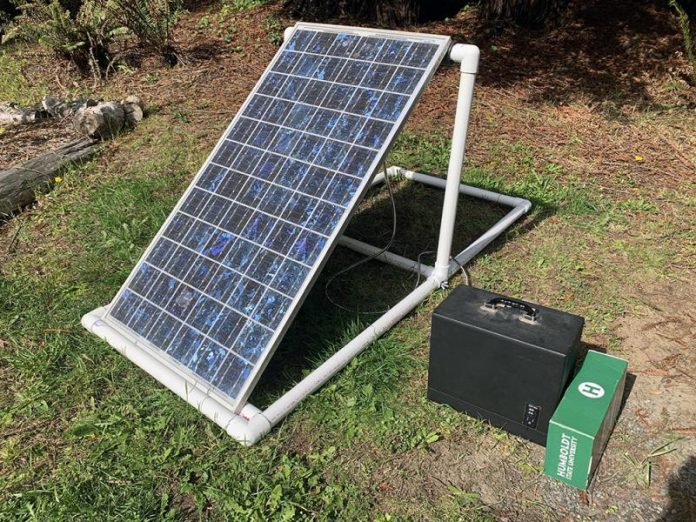“To Catch the Sun,” co-authored by Lonny Grafman, instructor of Environmental Resources Engineering, teaches its readers to design and build solar photovoltaic systems.
Lonny Grafman is just getting to the point where he considers himself an author. The Cal Poly Humboldt instructor of Environmental Resources Engineering has had work published in peer-reviewed journals and online but is still adjusting to his new role as a writer of books.
To Catch the Rain, which was originally published as part of a successful Kickstarter campaign in 2018, offers testimonials, curriculum, and techniques for rainwater catchment. Its sequel, To Catch the Sun, teaches its readers to design and build solar photovoltaic systems. To Catch the Sun was released in 2021. Both books have made several Amazon “hot lists.”
“I was inspired by Octavia Butler, a speculative fiction author who wrote amazing books,” says Grafman. “She wrote this series, Parable of the Sower and Parable of the Talents, about a realistic dystopian future in which she walks from Los Angeles to Humboldt County. Before she takes the walk, she reads all her dad’s books in his library to figure out how to survive. I wanted to write the books that I wished were on her bookshelf.”
Both books are available as free digital downloads but proceeds from sales of hardcopies go to support the Appropedia Foundation, an open-source database for people around the world to share renewable technology projects.
To Catch the Sun was written in collaboration with Joshua Pearce, a professor of Mechanical and Materials Engineering at Queen’s University in Canada. Pearce is a prolific academic author ranked in the top 0.1% on Academia.edu, and is known by some of his colleagues as “Dr. Solar.” Grafman says collaborating with Pearce allowed him to combine his co-author’s academic approach with his own “how to make stuff happen,” practicality.
“Once people started reaching out to share projects they made using To Catch the Rain, I was hooked!” says Grafman about writing a second book. “The more resources a community can capture and create on their own, the more power and resilience that community has. I want to be a part of that.”
Grafman’s work takes him to communities all over the world, and he says one of the most popular sections of his books are the stories drawn from those communities, from working with a grade school to install a rainwater storage tank in the Dominican Republic to working in India on a solar array that uses a metal screen to protect solar panels from stray rocks thrown at monkeys. The books also include a math and science curriculum for a variety of grade levels and a do-it-yourself section with project designs that can be scaled according to need.
“The books are very agnostic on what types of materials you’re building with, depending on the community and country you might be in,” says Grafman. “So for gutters for instance, you have components like metal vs bamboo vs PVC.”
Grafman adds that he has felt a very strong draw to work with communities so they can meet their own needs, but he recognized that there were only so many systems he could work on himself in any given year. That was a strong impetus for him to write the books, which have been translated into multiple languages, to put more knowledge into the hands of people who want it.
“People with money might talk about residual income,” he says. “I want to hear about residual impact.”
Marketing & Communications
1 Harpst Street
Arcata, CA 95521
(707) 826-3011






